New opportunities for cultural tourism
In mid-November, Hanoi hosted Bach Hoa Bo Hanh, Vietnam’s largest traditional costume parade, celebrating the beauty and pride of ethnic attire. The event, which attracted nearly 500 participants, has become a highlight of Hanoi’s tourism over the past four years.
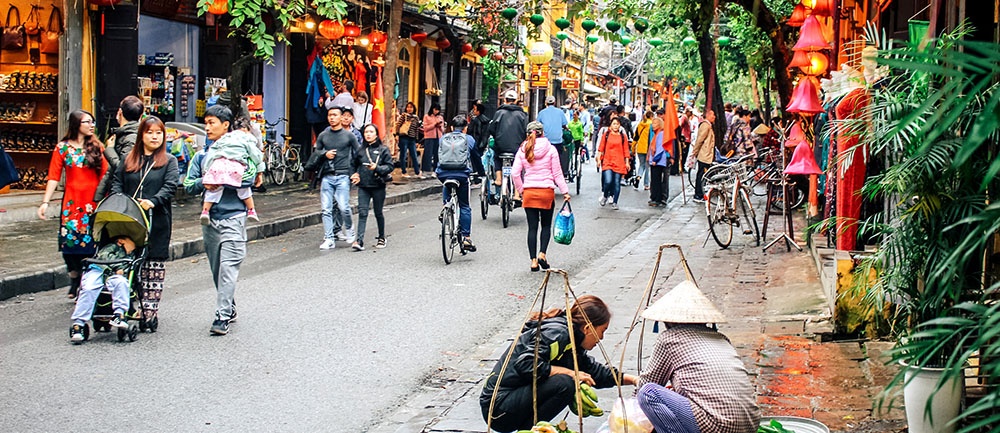 |
| New opportunities for cultural tourism |
According to Pham Diem Hao, deputy head of the Planning and Tourism Resource Development Department under Hanoi’s Department of Tourism, cultural events like the Bach Hoa Bo Hanh - an ancient and traditional costumes parade, play a vital role in stimulating tourism and engaging visitors. Following the show, Hanoi hosted the Hanoi Food Festival at the end of November, celebrating the capital’s rich culinary heritage and exploring strategies to promote local and international culinary brands.
“Developing cultural tourism products accelerates Hanoi’s tourism growth and distinguishes it from other destinations,” Hao said. “We will continue leveraging Hanoi’s outstanding heritage and authentic traditional values through regional and global media channels.”
Cultural tourism is becoming central to Vietnam’s broader tourism strategy. Nguyen Trung Khanh, director-general of the Vietnam National Authority of Tourism (VNAT), underscored its importance in differentiating Vietnam on the global stage, building a strong national tourism brand, and enhancing the country’s competitiveness in the international market.
“Vietnam’s regions each hold unique cultural and natural assets that can form the basis for distinctive tourism products. For instance, the northern midlands and mountainous region could focus on ethnic and ecological tourism, while the Red River Delta could highlight cultural tourism linked to traditional rice cultivation,” Khanh said.
Central Vietnam, home to several UNESCO-recognised heritage sites, is ideally suited for heritage-focused tourism, while the Southeast and Mekong Delta regions can prioritise historical and river-based cultural experiences, Khanh added.
“Vietnam’s rich cultural resources and strong national identity are tremendous assets for developing appealing tourism products,” Khanh said. “It is essential to build on these resources in innovative and sustainable ways.”
VNAT data showcases Vietnam’s wealth of cultural heritage, which includes 32 UNESCO-recognised sites – two natural sites, one mixed heritage site, and 29 cultural heritage sites. Additionally, the country boasts over 40,000 historical landmarks, 112 special national monuments, and 3,560 nationally recognised heritage sites. Vietnam’s cultural richness extends to its intangible heritage, with nearly 400 recognised intangible cultural elements and a wide range of traditional crafts and performing arts.
In recent years, the Vietnamese government has made cultural industries, including tourism, a national priority. The strategy for developing Vietnam’s cultural industries by 2020, with a vision towards 2030, identifies cultural tourism as a key sector. This strategy aims to position cultural tourism as a significant contributor to economic growth and job creation.
In August, the Prime Minister issued a directive emphasising the development of cultural industries such as tourism, handicrafts, design, cinema, fashion, and performing arts. Within this framework, cultural tourism has been recognised as a key service sector, expected to play a pivotal role in promoting Vietnam’s cultural identity and creating unique tourism products.
Local operators are increasingly focusing on creating immersive experiences that connect visitors with Vietnam’s culture and heritage. Huynh Thi Bich Huyen, owner of Mekong Silt Ecolodge in Can Tho province, shared how her business integrates cultural elements into its offerings.
“Visitors at the ecolodge can engage in activities such as cycling through Phong Dien, exploring floating markets, visiting fruit orchards, or participating in rice harvesting,” Huyen said. “From these seemingly ordinary activities, we create valuable tourism products. We aim to showcase the unique aspects of local culture and convey the traditions and lifestyles of the people here.”
Such initiatives align with VNAT’s goal to diversify Vietnam’s tourism offerings. Cultural tourism currently accounts for 10-15 per cent of Vietnam’s total tourism revenue, according to VNAT, but the Ministry of Culture, Sports and Tourism aims to raise this share to 15-20 per cent by 2030. The ambitious $40 billion revenue target for the tourism sector relies heavily on the development of cultural tourism as a key component.
Global trends further underline the potential for cultural tourism. The World Tourism Organisation estimates that culture contributes 37 per cent of global tourism and is expected to grow by 15 per cent annually. As tourists increasingly seek authentic and meaningful experiences, Vietnam’s cultural tourism offerings have significant potential for growth.
VNAT director-general Khanh noted that cultural tourism development should align with smart tourism, the establishment of creative centres, and globally connected cities. Key hubs such as Hanoi, Halong, Hue, Danang, Hoi An, Ho Chi Minh City, and Can Tho are positioned as strategic locations for international tourism promotion.
“The strategy for developing cultural tourism products must be linked to comprehensive marketing plans,” Khanh said. “Greater application of IT and digital technologies in building and promoting these products is essential. Specific promotional strategies tailored to different cultural tourism products will enhance Vietnam’s image and elevate its position on the global tourism map.”
Culinary tourism, a key aspect of cultural tourism, is also receiving increased attention. Events like the Hanoi Food Festival highlight the importance of Vietnam’s diverse culinary traditions in attracting visitors. According to a VNAT report, food experiences are among the top factors influencing international visitors’ choice to travel to Vietnam.
“Food is not just sustenance; it is a gateway to understanding the culture and identity of a place,” said Pham Diem Hao. “Hanoi’s cuisine, in particular, is a cultural treasure that plays a vital role in the city’s tourism appeal.”
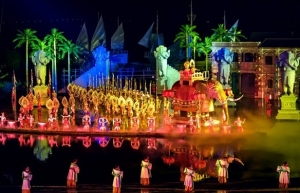 | Vietnam endowed with abundant resources to develop cultural tourism With cultural richness and a vast array of tangible and intangible cultural heritages, Vietnam is endowed with abundant resources for the development of cultural tourism. |
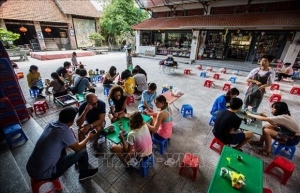 | Hanoi develops rural, agricultural tourism Agricultural and rural tourism is currently considered one of the types that can help increase the length of stay and experience for visitors to Hanoi capital city. |
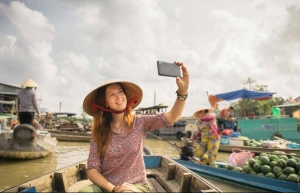 | Opportunity to earn millions from agricultural tourism The advantage of being an agricultural country can bring huge opportunities to Vietnam’s tourism industry, if utilised effectively, according to experts. |
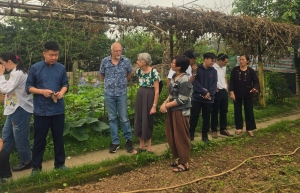 | Cultivating agricultural tourism model in Hanoi A tour with a difference for international visitors was launched on April 4 in Hanoi under a model developed by VietHarvest AgriTour. |
What the stars mean:
★ Poor ★ ★ Promising ★★★ Good ★★★★ Very good ★★★★★ Exceptional
Related Contents
Latest News
More News
- The destinations powering Vietnam’s festive season travel demand (December 04, 2025 | 18:33)
- Vietnam named among the world’s most exciting winter destinations (December 04, 2025 | 15:10)
- Phu Tho emerges as northern Vietnam’s new tourism hub (December 01, 2025 | 17:00)
- Vietjet completes Airbus A320/A321 updates ahead of deadline (December 01, 2025 | 09:49)
- Vietjet resumes Con Dao flights from early December (November 28, 2025 | 15:24)
- Free tickets, Lunar New Year promotions on offer at Vietjet Mega Livestream (November 26, 2025 | 15:32)
- Scandinavian Airlines and Vietnam Airlines broaden agreement with new routes (November 25, 2025 | 17:04)
- Halong Cruise Port welcomes over 3,100 international visitors (November 12, 2025 | 18:06)
- Vietnam.travel climbs to second place in Southeast Asia website rankings (November 12, 2025 | 18:01)
- Cat Ba named among Southeast Asia’s top island adventures (November 11, 2025 | 18:09)

 Tag:
Tag:






















 Mobile Version
Mobile Version